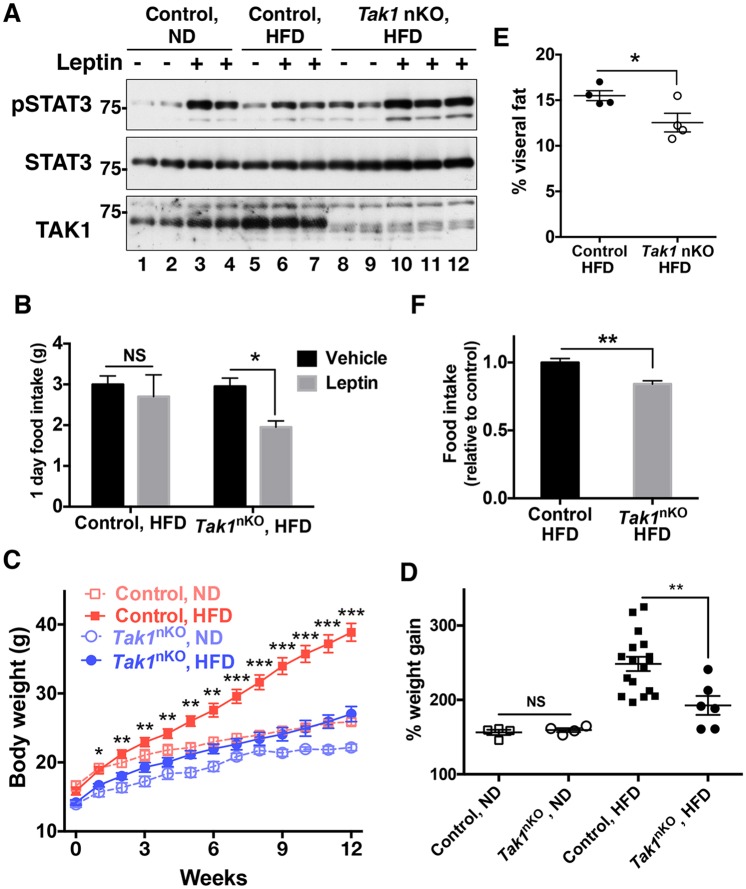Fig. 5.
CNS-specific deletion of Tak1 protects mice from HFD-induced leptin resistance and obesity. (A,B) Control (Tak1flox/flox no-Cre and Tak1flox/+ Nestin-Cre) mice that had been fed a normal diet (ND) or HFD for 12 weeks, and Tak1nKO (Tak1nKO, HFD) mice, were fasted for 18 h. PBS or 1 μg of leptin per gram of body weight was then injected intraperitoneally. (A) The hypothalamus was isolated at 15 min post injection, and STAT3 phosphorylation (pSTAT3) was analyzed by immunoblotting. Each lane represents an individual mouse. (B) Food intake for 24 h after leptin injection was measured. Control with HFD, n=5; Tak1nKO with HFD, n=6; mean±s.e.m.; NS, not significant; *P<0.05. (C–F) 4-week-old control and Tak1nKO male mice were fed either a normal diet or HFD for 12 weeks. (C) Mice were weighed weekly. Control with normal diet, n=4; control with HFD, n=17; Tak1nKO with normal diet, n=4; Tak1nKO with HFD, n=6; mean±s.e.m.; P-values shown are the comparison between control with HFD and Tak1nKO with HFD; *P<0.05; **P<0.01; ***P<0.001. Control mice included wild-type (Tak1flox/flox no-Cre) and Tak1flox/+ Nestin-Cre mice. (D) Percent body weight change at week 12 of the data shown in C was calculated, and all data points were plotted. The initial weights at week 0 are designated as 100%. Mean±s.e.m.; NS, not significant; **P<0.01. (E) Visceral fats were isolated and weighed at the end of the experiment shown in A. n=4 per group; mean±s.e.m.; *P<0.05. (F) At 11 weeks after feeding with a normal diet or a HFD, food intake was measured daily, and cumulative food intake for 1 week was calculated. Control with HFD; n=9; Tak1nKO with HFD; n=5; mean±s.e.m.; **P<0.01.

